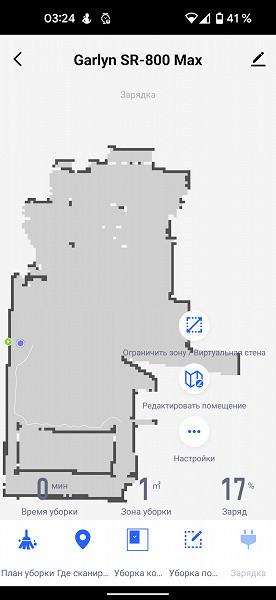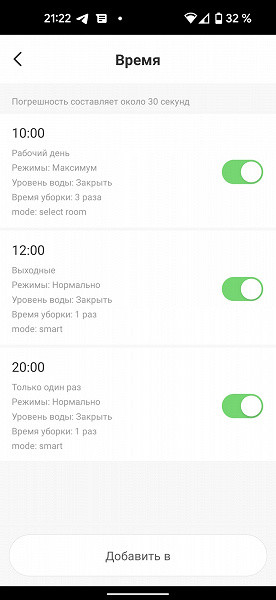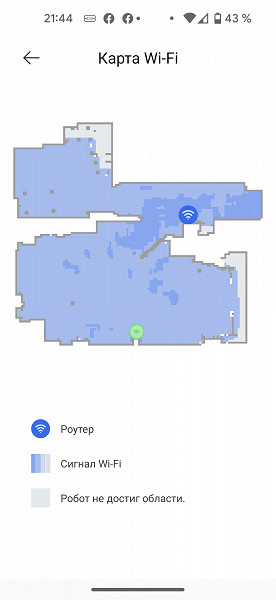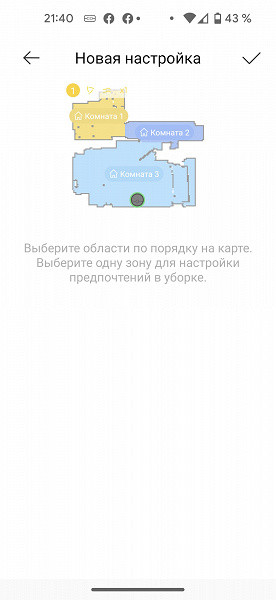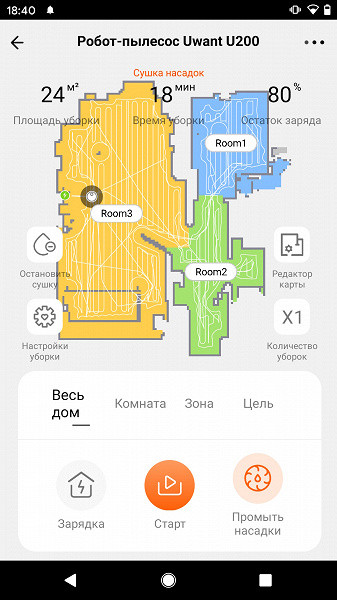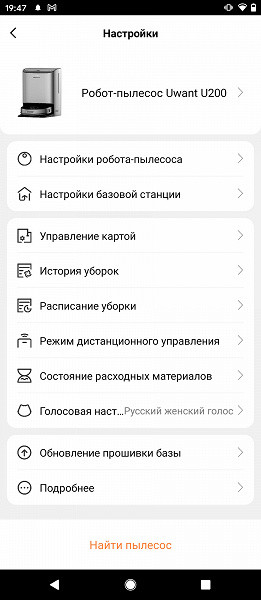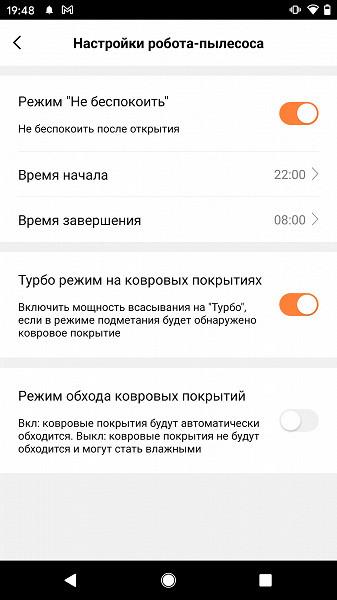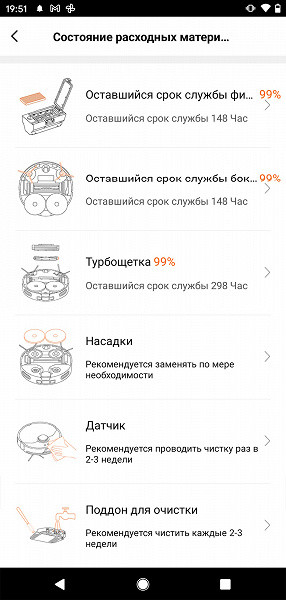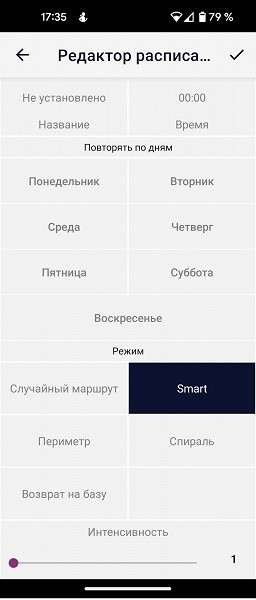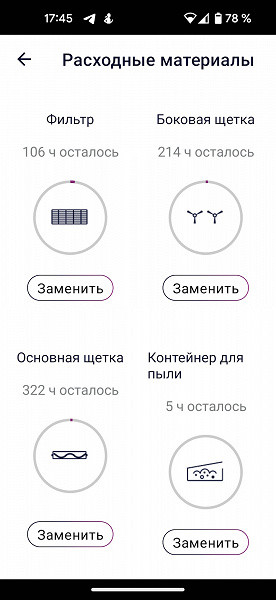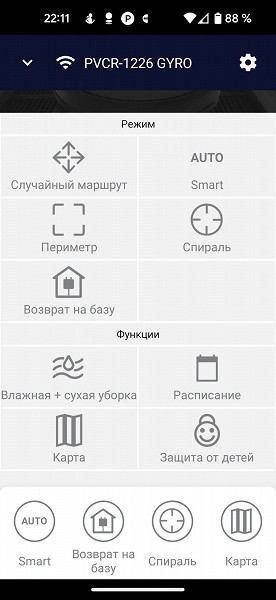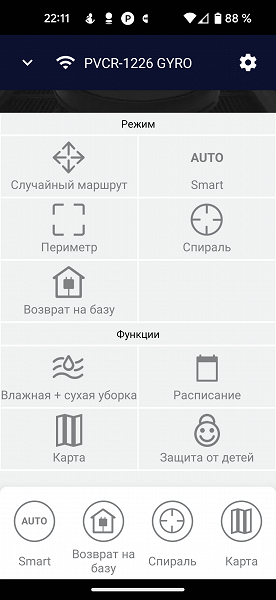Over the past year, we have evaluated about twenty robotic vacuum cleaners, and not all of them performed perfectly in tests. However, there are plenty of models worthy of mention. It was difficult to choose the best ones, but we noted those that collected the most dirt and did not have significant shortcomings according to the results of our tests.
Models with lidar (laser rangefinder)
In our review, most robot vacuum cleaners are equipped with laser rangefinders or lidars, which accurately determine the distance to obstacles. This is achieved due to the fact that a turret with an LDS sensor rotating 360 degrees is installed on the top of the body. It scans the space, creating a map of the room and the optimal cleaning path, which is transmitted to the “brain” of the device. This technology significantly increases the efficiency of robots with lidar compared to models without this function, which was confirmed during our tests. Lidar-equipped robots clean faster and more efficiently, while saving battery power through smarter route planning: they avoid areas that have already been cleaned and accurately determine room boundaries and the location of obstacles. Thanks to this, such robotic vacuum cleaners work effectively even in automatic mode without additional settings, minimizing the risk of getting lost or stuck.
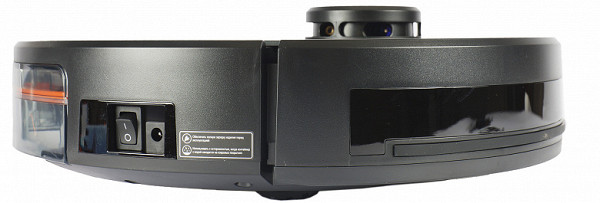
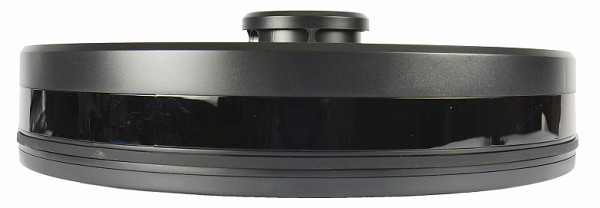
Garlyn SR-800 Pro Max: the fastest and highest quality cleaning
The leading product of the year both in terms of speed and quality of cleaning was the advanced model Garlyn SR-800 with the ability to control both remotely and via the Internet, support for voice commands, a removable unit for wet cleaning, UV LEDs for disinfecting floors and an LDS system for high-precision navigation. We tested this robot vacuum cleaner back in 2022, and it already showed impressive results. In 2023, we examined its updated version, Pro Max, which added an auto-charging and self-cleaning station as an addition. During the tests, it was confirmed that both versions of the robot practically do not differ in functionality, and the updated robot again demonstrated high operating efficiency.
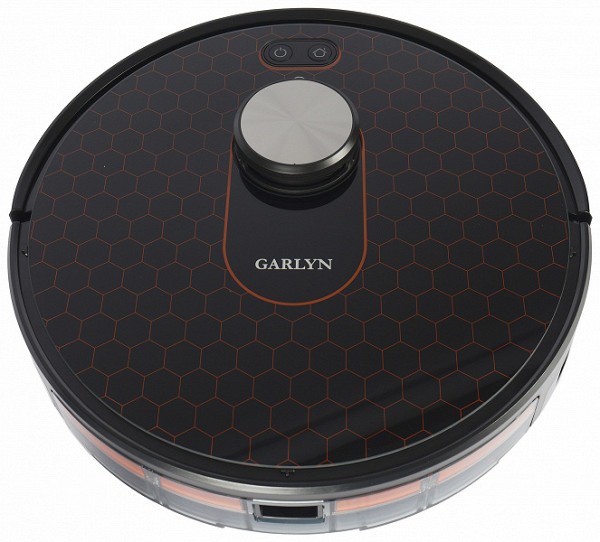
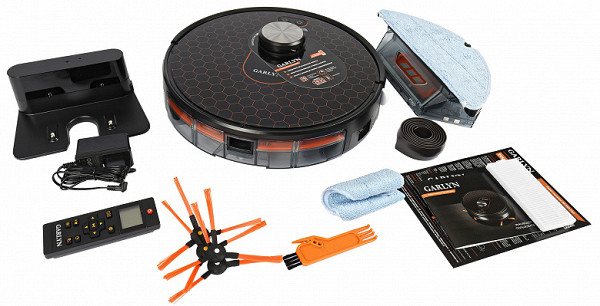
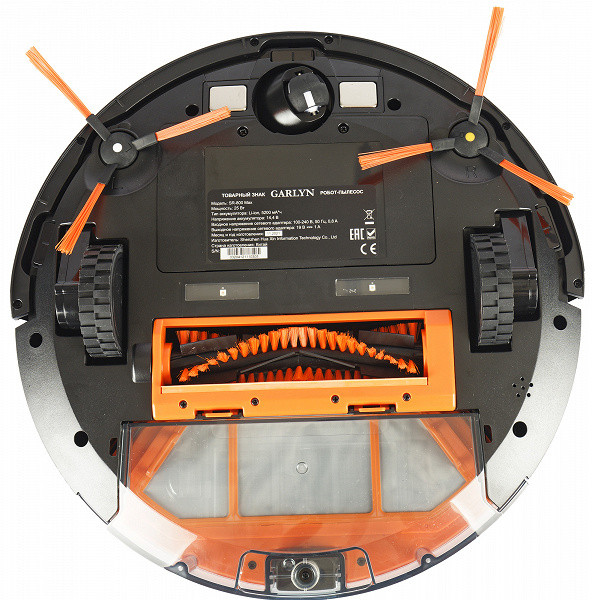
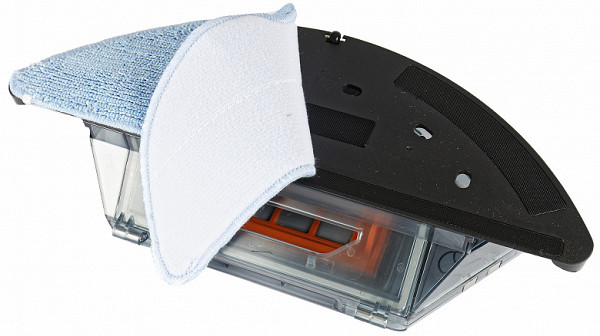
The robot's navigation system includes infrared sensors and collision sensors that ensure safe movement around the room. The user can limit the cleaning area using the included tape or through the mobile application. The app also allows you to configure various cleaning parameters such as schedule, noise level, cleaning thoroughness, number of passes, and prohibit cleaning at certain times.
The robot can operate in both dry cleaning mode and combined cleaning mode, simultaneously sucking up dust and wiping the floor using a damp microfiber cloth. The intensity of humidification can be adjusted, and water is supplied from a removable reservoir.
During our tests, we found almost no shortcomings in this model. The robot cleans efficiently in various conditions thanks to accurate navigation and constant updating of the room map. The user can also adjust the map in the application if necessary. The application provides information about the current cleaning, cleaning area and battery charge, and also allows you to start cleaning automatically or clean a specific room or area.
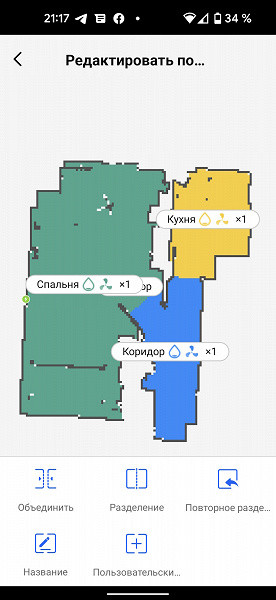
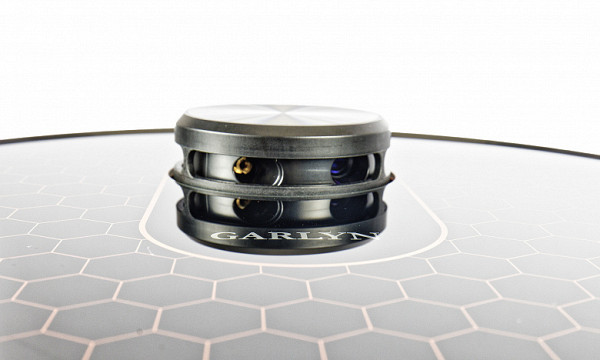
The robot vacuum cleaner is compact in size, allowing it to easily maneuver in tight spaces without getting stuck. High-quality wheel design and sufficient ground clearance ensure the ability to overcome rapids of considerable height. However, using the module for wet cleaning slightly limits its mobility. When wet cleaning, which is only suitable for smooth surfaces, the cloth is pressed tightly to the floor, which makes evenness and the absence of height differences important for the quality of cleaning and can cause delays in the movement of the robot.
For the automatic self-cleaning station, tests have shown that it should only be placed on a flat, hard surface, as the robot may have difficulty making contact on carpeted or uneven surfaces. Once contact has been successfully made, the self-cleaning process leaves a positive impression: debris from the container passes into a filter bag on the base, which seals tightly upon removal, preventing contact with dust.
Only numbers
94.7% of garbage collected in the first pass (in 14 minutes 23 seconds)
97.4% of garbage collected in the second pass (in 14 minutes 54 seconds)
98.1% of garbage collected in the third pass (in 14 minutes 37 seconds)
Autonomous cleaning time at lowest power — 170 minutes, at maximum power — 72 minutes
Dreame D10s Plus: laser navigation, video recording of the room, self-cleaning
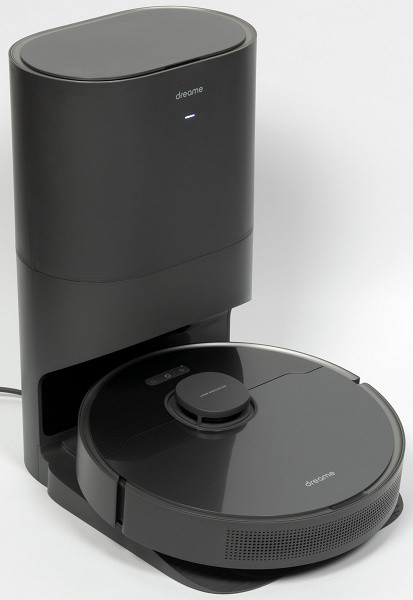
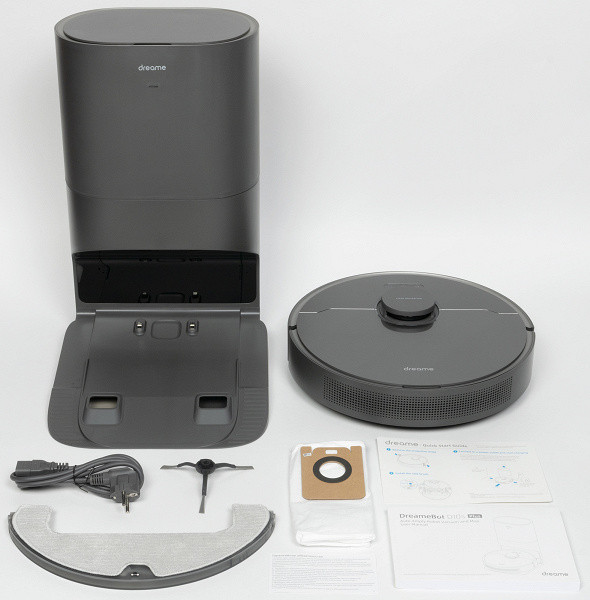
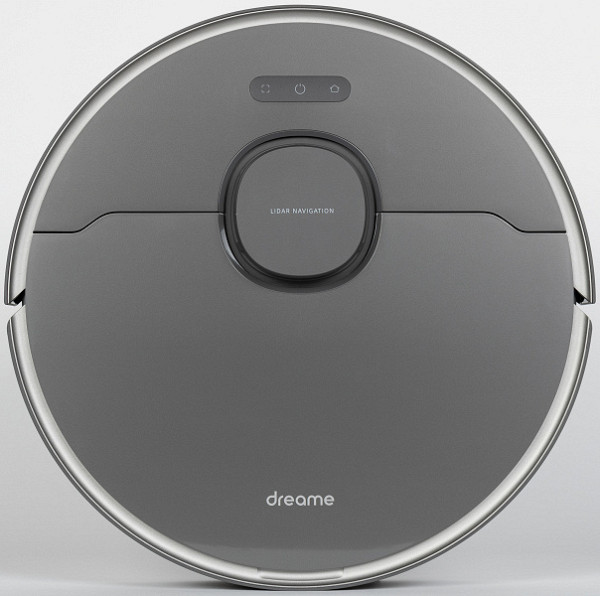


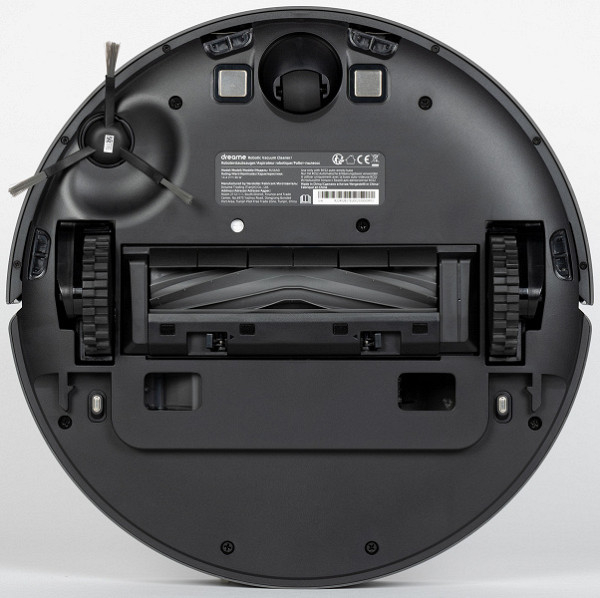
The uniqueness of this model lies not only in the use of lidar for navigation, but also in the integration of a video camera that analyzes the space and identifies obstacles. This allows you to control the robot through a mobile application based on video analysis, directing it to perform detailed cleaning of specific areas. Thanks to the camera, the robot is able to recognize small objects on the floor more effectively than using infrared sensors, and carefully avoids them. In our tests, when a sock appeared in front of the robot, it successfully avoided the obstacle without being pulled in by it.
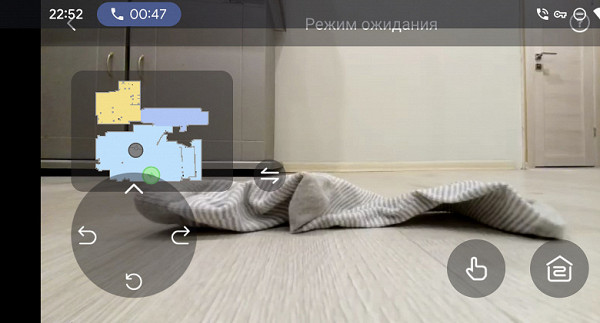
This vacuum supports both dry and wet cleaning, with the latter feeling more like a light wet wipe rather than a deep clean. The water reservoir on the body allows the microfiber cloth to be evenly moistened — this is a fairly typical feature for such devices. Likewise, basic app control features include setting a schedule, selecting rooms to clean, limiting the areas available for cleaning, and automatically adapting suction power for carpets, as well as monitoring the status of consumables.
However, the device also offers unique features: you can indicate that there are pets in the house, so that the vacuum cleaner expects their “surprises” on its way and avoids them. The application provides a child control lock, which is not a very common, but extremely useful feature. No less important is the option to edit and backup room maps, which is rarely found in similar applications.
An interesting feature of the application is the function of displaying a Wi-Fi signal map, which allows you to determine the signal level in different parts of the house and, based on this data, optimize the location of Wi-Fi equipment to improve communication and avoid signal loss by the robot in “dead zones.”
Despite the impressive innovative features of this vacuum cleaner, we were primarily interested in how effective it is in cleaning and whether it can make life easier for the user in terms of caring for the device. During testing, we were convinced that the device copes well with both dry and wet cleaning, leaving behind cleanliness without marks or streaks. However, the degree of freedom that the user has after cleaning depends on the type of cleaning. Returning to the base, the robot activates the powerful vacuum cleaner built into it, which sucks all the collected dirt into the bag, which makes dry cleaning especially carefree. After wet cleaning, a little more attention will be required: you need to empty the container of any remaining water and wash the cloth to prepare the device for the next use.
Only numbers
95.9% of garbage collected in the first pass (in 7 minutes 15 seconds)
98.1% of garbage collected in the second pass (in 7 minutes 25 seconds)
99.1% of garbage collected in the third pass (in 7 minutes 10 seconds)
Viomi V3 Max
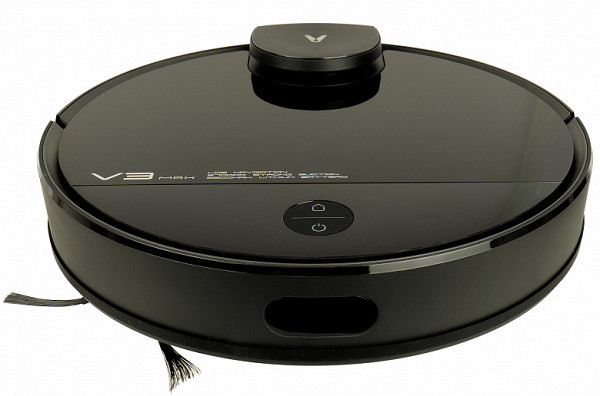
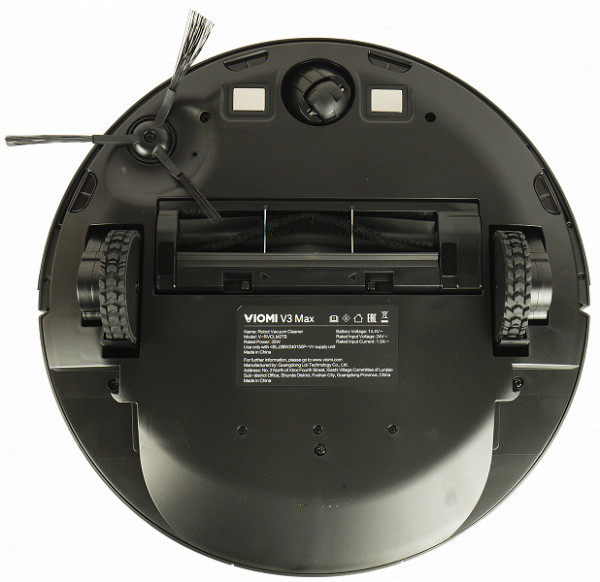
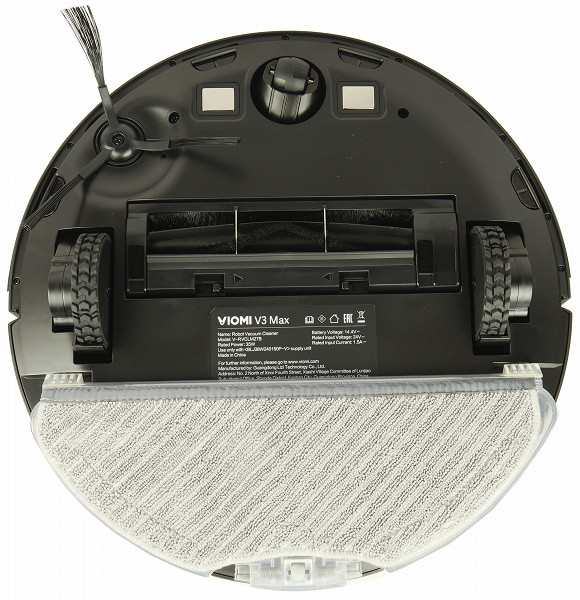
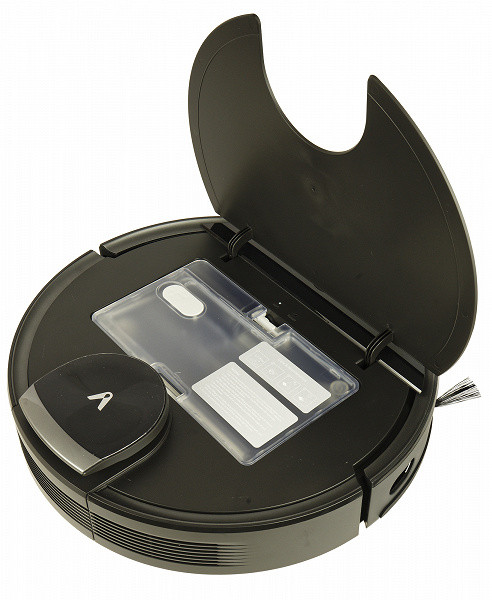
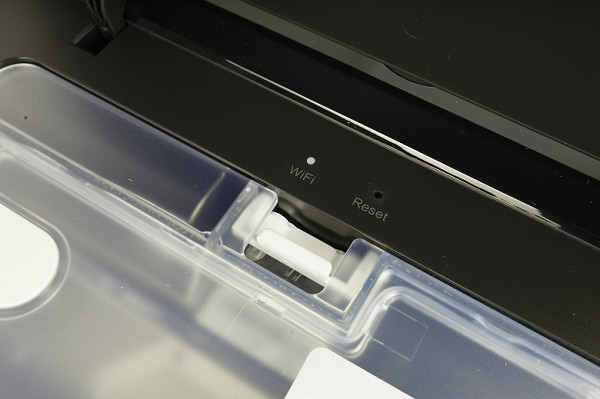
The two Viomi robotic vacuum cleaner models tested in our laboratory impressed us with their outstanding cleaning performance. However, we are including the V3 model in our review rather than the V2, highlighting it due to its versatility: the V3 is suitable for both dry and wet cleaning. First impressions included a pleasant surprise at the abundance of replacement parts and accessories in the kit, including a choice between disposable and reusable floor cloths, as well as a large 700 ml water tank, which allows you to clean a large area without refilling. An important feature is that in wet cleaning mode the robot only cleans the floor without picking up dust and debris. Therefore, when replacing the dust container with a water container for combined cleaning, it is recommended to use dry cleaning first.
You can control the vacuum cleaner in several ways: directly using a button on the body, via the remote control or remotely, thanks to support for the Mijia ecosystem and compatibility with the voice assistants Google Assistant and Alexa. For optimal navigation and the ability to edit room maps, the application recommends carrying out at least one cleaning in automatic mode, after which a detailed map with the designation of walls and furniture becomes available. It is convenient that the application supports several maps of premises, which is especially important for owners of multi-storey buildings or apartments, as well as for those who use the robot in different locations, for example, in a city apartment and in a country house. The app also lets you select a cleaning mode, set a schedule, adjust noise levels, create no-clean zones, and monitor supplies, covering all key management aspects without missing important features.
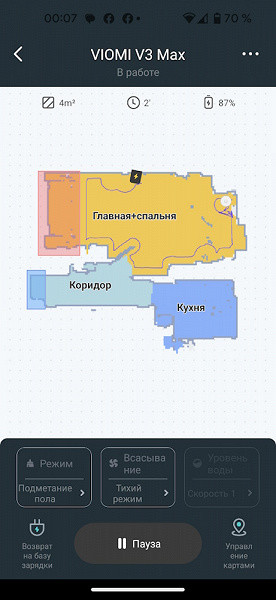
We also noticed a few minor issues with this model, such as the small capacity of the waste container, which requires frequent emptying, and sometimes inaccurate translation of operating status messages. However, even with these shortcomings, the impression of the robot remains positive: it performs its functions well.

Only numbers
94.7% of garbage collected in the first pass (in 6 minutes 50 seconds)
97.4% of garbage collected in the first pass (in 13 minutes 35 seconds)
98.6% of garbage collected in the first pass (in 20 minutes 20 seconds)
Battery life — 245 minutes, this is almost a record
Uwant U200: ideal dry and wet cleaning and advanced self-cleaning system
The model is designed for dry and wet (combined) cleaning and belongs to a special category of robotic vacuum cleaners with a base for cleaning the dust collector. This base has a built-in vacuum cleaner that pulls debris from the container into a large bag. Although this solution is already common, the manufacturer has made improvements: this robot is also capable of rinsing rags after wet cleaning using hot water. For this purpose, the base has a water recirculation and heating system. In addition, it wipes the floor with heated water, providing a cleaning quality comparable to hand washing. Interestingly, there is no water reservoir on the robot’s body: water is supplied to the washing discs from the base, and during cleaning the robot sometimes drives up to the base to wet the rags.
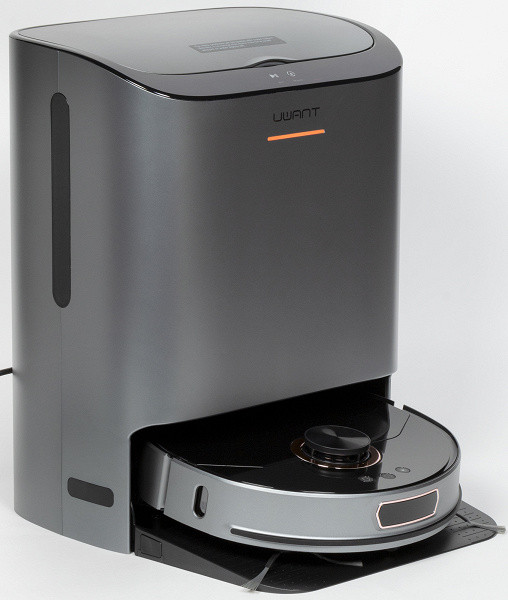
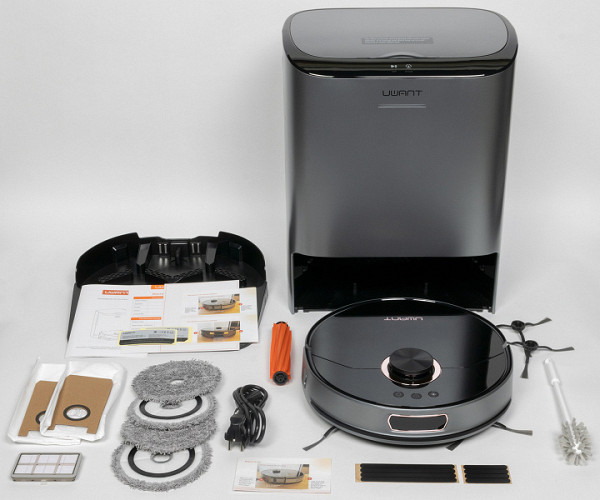
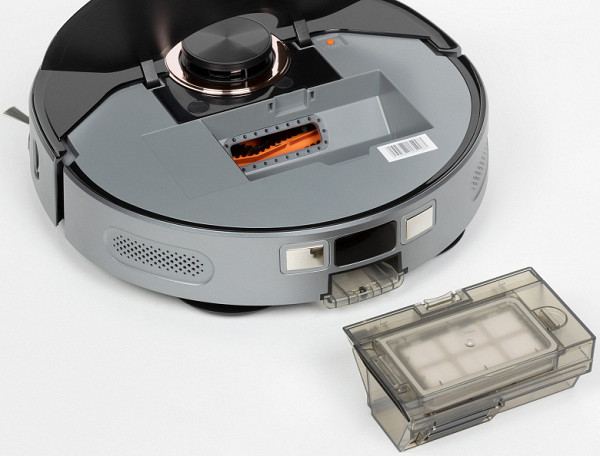
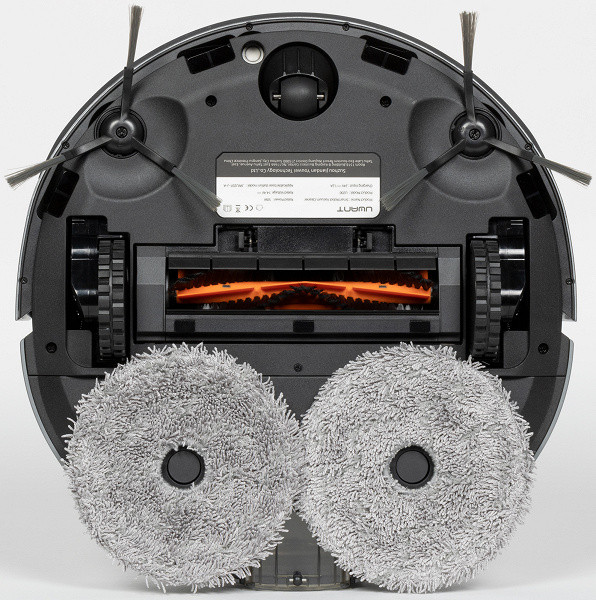
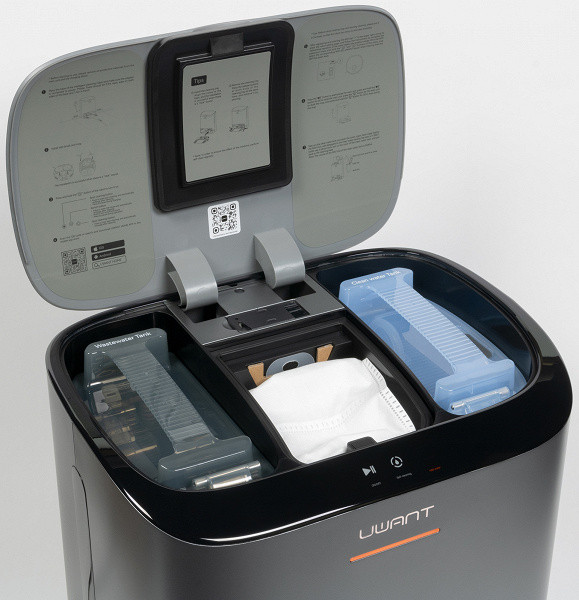
The robot quickly and accurately navigates the room, remembering the location of obstacles and building a map of the room in just a few minutes. The application for controlling it provides many useful functions: from setting a schedule to determining the type of coverage to activate the turbo mode on carpets or exclude them from the wet cleaning zone. The user can also view and edit the room map, creating different options for different floors of the house or apartment. You can easily and conveniently limit cleaning zones right in the app.
The quality of the robot's cleaning left us more than satisfied: there were no drips or streaks during both dry and wet cleaning. Using hot water really allows you not only to wipe the floor, but also to effectively remove dirt. It’s nice to note that the robot independently determines when it is necessary to wet the rags again and returns to the base to do this. Equally important, to switch to dry cleaning you simply need to remove the cleaning discs. The robot acts rationally, cleaning along walls and not missing hard-to-reach places. When it encounters rugs or dust collectors on its way, it independently increases the suction power. Upon completion of cleaning, the robot returns to the base, where it releases the collected garbage into a bag and rinses the rags, and then dries them by pumping warm air into the tray.
Only numbers
97.2% of garbage collected in the first pass (in 7 minutes 35 seconds)
99.5% of garbage collected in the second pass (in 7 minutes 20 seconds)
Robot vacuum cleaners without lidar
To navigate in space, avoid collisions with obstacles and not fall down stairs, robot vacuum cleaners use infrared sensors that detect obstacles, as well as mechanical sensors built into bumpers that react to collisions. Some models do not have a laser rangefinder, which helps build a map of the room and navigate around it. Although these models are considered inferior in cleaning quality compared to more expensive and equipped robots, our tests show that there are exceptions to this rule.
Polaris PVCR 1226 Wi-Fi IQ Home Gyro
The model for dry and wet cleaning with the possibility of remote (via remote control) and remote (via mobile application) control demonstrated high cleaning quality, despite the lack of lidars. The robot uses infrared “eyes” — sensors, of which it has enough, and they are located not only on one side, but on different ones, which provides it with an accurate vision of the surrounding space.

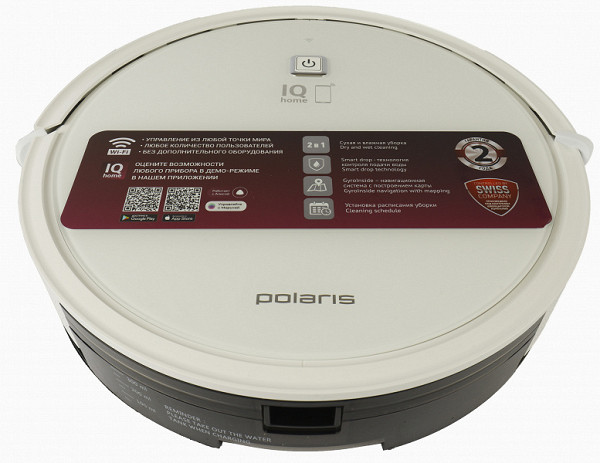
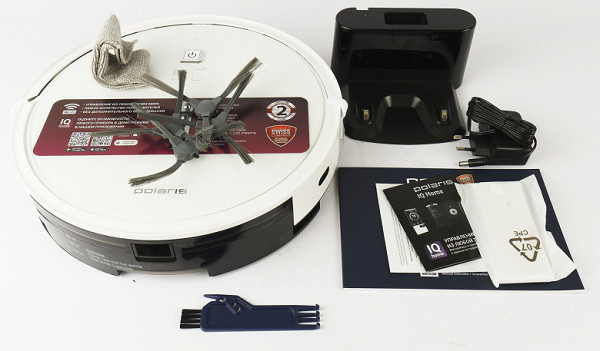
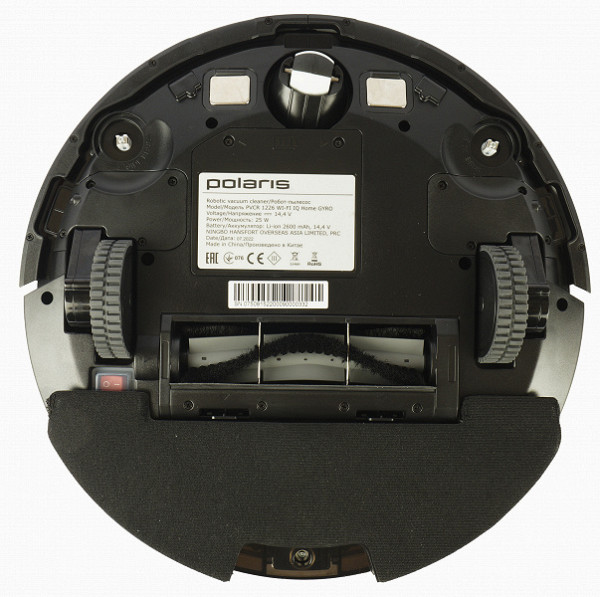
The design of the robot's chassis ensures smooth movement without braking on height differences and uneven floors, and also allows it to successfully overcome low thresholds without slipping.
Control can be carried out in various ways: through one button, a remote control or a mobile application that unites all smart devices of the brand. The application allows you to configure the cleaning route, intensity, schedule, and also track the status of consumables. The robot also informs about its actions and problems using sound signals.
Operating modes include standard, spiral, along the walls, turbo and quick cleaning. The robot moves rationally, avoiding obstacles, and successfully finds a charging base. The quality of dry cleaning turned out to be at a high level, even without the use of lidar, and wet cleaning was carried out without drips or streaks. Using the mobile application was convenient and intuitive.
Only numbers
89.6% of garbage collected in the first pass (10 minutes)
95.6% of garbage collected in the second pass (10 minutes)
97.9% of garbage collected in the third pass (10 minutes)
Autonomous cleaning time at medium speed — 50 minutes
Indeed, there is no doubt that lidar-equipped vacuum cleaners typically demonstrate higher cleaning efficiency and better battery management. Laser navigation is an important success factor for a robot vacuum cleaner. However, there are models with lidars, which, although they clean well, have other disadvantages, as well as models without lidar, but with a gyroscope, which achieve a high level of cleaning. Our digest includes both models with lidars and those that operate only with a gyroscope. The choice is yours.

